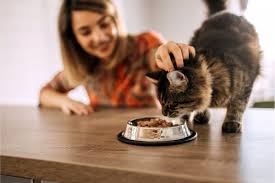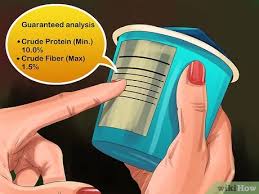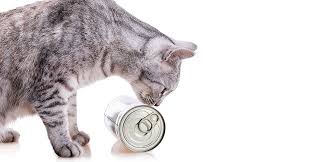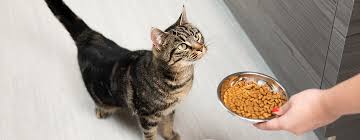Cat nutrition and feeding are crucial aspects of feline health and well-being. Proper nutrition plays a significant role in ensuring that cats live long, healthy lives. Unlike dogs, cats are obligate carnivores, which means they require a diet that is primarily composed of meat to thrive.
This dietary requirement stems from their evolutionary history, where their ancestors primarily consumed prey rich in protein and fat. Understanding the specific nutritional needs of cats is essential for pet owners to provide balanced meals that support their overall health, energy levels, and immune function.
A well-balanced diet for cats consists of essential nutrients, including proteins, fats, carbohydrates, vitamins, and minerals. Proteins are vital for building and repairing tissues, producing enzymes and hormones, and supporting immune function.
High-quality animal proteins should be the cornerstone of a cat’s diet, as they contain the essential amino acids that cats cannot synthesize on their own. Additionally, fat provides a concentrated source of energy and aids in the absorption of fat-soluble vitamins, making it an important component of a cat’s diet.
Cats have unique dietary requirements when it comes to carbohydrates. While they can utilize some carbohydrates for energy, their digestive systems are not designed to process large amounts.
Therefore, it’s important to choose cat foods with a limited carbohydrate content. Instead, focus on high-quality ingredients that provide the necessary nutrients without excessive fillers, such as grains and starches.
Vitamins and minerals also play a crucial role in maintaining a cat’s health. Vitamins A, D, E, and K, along with B vitamins, are essential for various bodily functions, including vision, bone health, and metabolism.
Minerals like calcium, phosphorus, and magnesium are necessary for healthy bone structure and various enzymatic processes. A balanced cat diet should provide these vitamins and minerals in the correct proportions to avoid deficiencies or imbalances.
When it comes to feeding methods, cat owners have several options to choose from. Dry kibble, wet canned food, and raw diets each have their pros and cons. Dry kibble is convenient, helps reduce dental plaque, and can be left out for cats to nibble on throughout the day.
However, it may not provide enough moisture for some cats. Wet food is often more palatable and hydrating, which can be beneficial for cats prone to urinary issues. Raw diets can offer high protein levels and natural nutrients but require careful handling and preparation to ensure safety and nutritional balance.
Portion control is another critical aspect of cat feeding. Overfeeding can lead to obesity, which is a growing concern in feline health. To prevent weight gain, it’s essential to follow feeding guidelines based on the cat’s age, weight, and activity level. Regularly monitoring a cat’s weight and adjusting portion sizes as needed can help maintain a healthy body condition.
Understanding the Nutritional Needs of Cats

Cats have unique dietary requirements as obligate carnivores, meaning they thrive on a diet primarily composed of meat.
1. High Protein Requirements: Cats require a higher percentage of protein in their diet compared to other pets. Protein supports muscle development and energy.
2. Fats as Energy Sources: Fats provide essential fatty acids and energy, helping with the absorption of fat-soluble vitamins and contributing to healthy skin and coat.
3. Minimal Carbohydrates: While cats can digest some carbohydrates, they do not require them in large amounts; focus on high-quality protein sources.
4. Specific Nutrient Needs: Cats need certain nutrients that are only found in animal tissues, such as taurine, arachidonic acid, and vitamin A.
5. Life Stage Considerations: Kittens, adult cats, and senior cats have different nutritional needs; always choose food appropriate for your cat’s life stage.
Essential Nutrients for Feline Health
Understanding the essential nutrients your cat needs will help you choose the right diet.
1. Proteins: Proteins are vital for growth, tissue repair, and immune function; look for animal-based proteins like chicken, beef, or fish.
2. Fats: Healthy fats provide energy and support cell structure; Omega-3 and omega-6 fatty acids are important for skin and coat health.
3. Carbohydrates: Although not essential, carbohydrates can provide a source of energy; opt for digestible sources like rice or peas.
4. Vitamins and Minerals: Cats need vitamins A, D, E, K, and several B vitamins, as well as minerals like calcium, phosphorus, and potassium for overall health.
5. Water: Always ensure your cat has access to fresh water, as hydration is critical for kidney function and overall health.
Types of Cat Food: Dry, Wet, and Raw
There are several types of cat food available, each with its benefits.
1. Dry Cat Food (Kibble): Convenient and easy to store; helps reduce dental tartar and promotes oral health; lower in moisture content, so ensure your cat drinks enough water.
2. Wet Cat Food (Canned): Higher moisture content, which aids hydration; more palatable for many cats, making it a good option for picky eaters; can be beneficial for cats with urinary tract issues due to increased water intake.
3. Raw Cat Food: Mimics a natural diet, including raw meat, bones, and organs; some owners believe it leads to healthier coats and improved energy levels; care must be taken to ensure food safety and balanced nutrition.
Read Also: 17 Medicinal Health Benefits Of Lotus Seed (Nelumbo nucifera)
How to Read Cat Food Labels

Understanding cat food labels helps you make informed choices for your cat’s diet.
1. Ingredient List: Look for high-quality protein as the first ingredient; avoid foods with vague terms like “meat by-products” or fillers.
2. Guaranteed Analysis: Check the protein, fat, fiber, and moisture percentages; ensure the protein content meets your cat’s needs.
3. Nutritional Adequacy Statement: Look for a statement from AAFCO (Association of American Feed Control Officials) indicating that the food is complete and balanced.
4. Feeding Guidelines: Follow the recommended feeding amounts based on your cat’s weight and life stage; adjust as necessary based on your cat’s needs.
5. Expiration Date: Check the expiration date to ensure the food is fresh and safe for consumption.
Age-Appropriate Nutrition for Cats
Cats have different nutritional needs at various life stages.
1. Kittens: Kittens require a diet rich in protein and fat to support their rapid growth and development; high-energy food is essential.
2. Adult Cats: Once cats reach adulthood (around one year old), their nutritional needs stabilize; focus on balanced meals with moderate protein and fat.
3. Senior Cats: Senior cats (usually over seven years old) may need food lower in calories but higher in protein to maintain muscle mass; look for diets that support joint health.
4. Life Stage-Specific Formulas: Many commercial cat foods are formulated for specific life stages, ensuring that your cat receives the appropriate nutrients.
5. Hydration Needs: Older cats may be prone to kidney issues, so wet food or ensuring access to fresh water is crucial for hydration.
Special Dietary Considerations for Cats
Some cats have unique dietary needs based on health conditions or sensitivities.
1. Food Allergies: Some cats may develop allergies to common ingredients like chicken or fish; consult your vet for hypoallergenic diets if allergies are suspected.
2. Weight Management: Overweight cats require a calorie-restricted diet; focus on high-fiber foods that promote fullness without excess calories.
3. Dental Health: Cats prone to dental issues may benefit from dental-specific diets designed to reduce tartar buildup; consider providing dental treats or chews.
4. Medical Conditions: Cats with diabetes, urinary tract issues, or other health problems may need specialized diets; always consult your veterinarian for guidance.
5. Pregnant or Nursing Cats: Pregnant or nursing cats need increased calories and nutrients; high-quality kitten food can be suitable for these cats.
Read Also: Hookworms: Description, Damages Caused, Control and Preventive Measures
Common Feeding Mistakes to Avoid

Avoiding common feeding mistakes can help maintain your cat’s health.
1. Overfeeding: Feeding too much can lead to obesity; measure portions according to guidelines and adjust based on activity levels.
2. Inconsistent Feeding Schedule: Irregular feeding times can lead to digestive issues; establish a consistent feeding schedule.
3. Poor Food Choices: Feeding low-quality or inappropriate foods can lead to nutrient deficiencies; choose high-quality cat food that meets AAFCO standards.
4. Not Considering Life Stages: Feeding adult food to kittens or senior diets to young cats can lead to health issues; choose food based on your cat’s life stage.
5. Neglecting Hydration: Cats can be prone to urinary issues; ensure they have constant access to fresh water and consider incorporating wet food into their diet.
Portion Control: How Much to Feed Your Cat
Portion control is essential to maintaining a healthy weight and preventing obesity in cats.
1. Follow Feeding Guidelines: Check the packaging for recommended feeding amounts based on your cat’s weight and life stage; adjust as necessary.
2. Use Measuring Tools: Use a measuring cup or scale to ensure accurate portion sizes; avoid free-feeding to control caloric intake.
3. Monitor Body Condition: Regularly assess your cat’s body condition; adjust portions based on weight gain or loss.
4. Consider Activity Levels: Active cats may require more food than sedentary ones; adjust portions according to their lifestyle.
5. Consult Your Veterinarian: For specific portion control needs, especially for weight management, always consult with your veterinarian for personalized recommendations.
Homemade Cat Food: Pros and Cons
Creating homemade cat food can be beneficial but comes with challenges.
Pros:
1. Quality Control: You control the ingredients, ensuring high-quality, fresh food without fillers or preservatives.
2. Customization: You can tailor meals to meet your cat’s specific dietary needs or preferences, including avoiding allergens.
3. Bonding Opportunity: Preparing food can be a way to bond with your cat, knowing you’re providing them with nutritious meals.
Cons:
1. Nutritional Balance: It can be challenging to create a balanced diet; improper nutrition can lead to deficiencies or health issues.
2. Time-Consuming: Preparing homemade meals requires more time and effort compared to commercial options.
3. Cost Considerations: High-quality ingredients can be more expensive than store-bought cat food, leading to higher overall costs.
Supplements for Cats: When and Why to Use Them
Supplements can be beneficial for certain cats under specific circumstances.
1. Nutritional Gaps: If your cat has dietary restrictions or is on a homemade diet, supplements can fill nutritional gaps; consult with your vet for recommendations.
2. Health Conditions: Cats with specific health issues, such as joint problems or kidney disease, may benefit from supplements tailored to their needs; talk to your vet for advice.
3. Age-Related Needs: Senior cats may require supplements to support joint health or cognitive function; consider age-appropriate supplements.
4. Stressful Situations: Cats undergoing stress, such as a move or a new pet in the home, might benefit from calming supplements; discuss options with your veterinarian.
5. Overall Wellness: Some cat owners choose to use general wellness supplements to support skin, coat, and digestive health; always opt for vet-recommended products.
Transitioning Your Cat to a New Diet
Changing your cat’s diet requires a gradual approach to avoid digestive issues.
1. Slow Introduction: Start by mixing a small amount of the new food with the old food; gradually increase the new food over 7-10 days.
2. Monitor Reactions: Observe your cat for any signs of digestive upset, such as vomiting or diarrhea; adjust the transition pace if issues arise.
3. Stick to the Plan: Consistency is key; avoid switching back and forth between foods during the transition period.
4. Fresh Water: Always ensure fresh water is available during the transition; hydration is crucial for overall health.
5. Consult Your Veterinarian: If you encounter challenges during the transition, or if your cat has special dietary needs, consult your veterinarian for tailored advice.
Recognizing Signs of Nutritional Deficiencies in Cats
Being aware of nutritional deficiencies can help you address issues before they become serious.
1. Poor Coat Condition: Dull, dry, or flaky skin may indicate a lack of essential fatty acids or other nutrients; monitor your cat’s coat for changes.
2. Weight Changes: Sudden weight loss or gain can signal nutritional imbalances; keep an eye on your cat’s weight and body condition.
3. Lethargy: A lack of energy or reluctance to play could indicate nutritional deficiencies; observe your cat’s activity level.
4. Digestive Issues: Frequent vomiting or diarrhea may suggest dietary issues; consult your veterinarian if these symptoms persist.
5. Behavioral Changes: Changes in mood or behavior, such as increased irritability, can sometimes be linked to nutritional deficiencies; monitor your cat’s overall demeanor.
Do you have any questions, suggestions, or contributions? If so, please feel free to use the comment box below to share your thoughts. We also encourage you to kindly share this information with others who might benefit from it. Since we can’t reach everyone at once, we truly appreciate your help in spreading the word. Thank you so much for your support and for sharing!
Read Also: How To Raise Chickens – The Simple Secrets To A Great Backyard Flock
Frequently Asked Questions
We will update this section soon.

